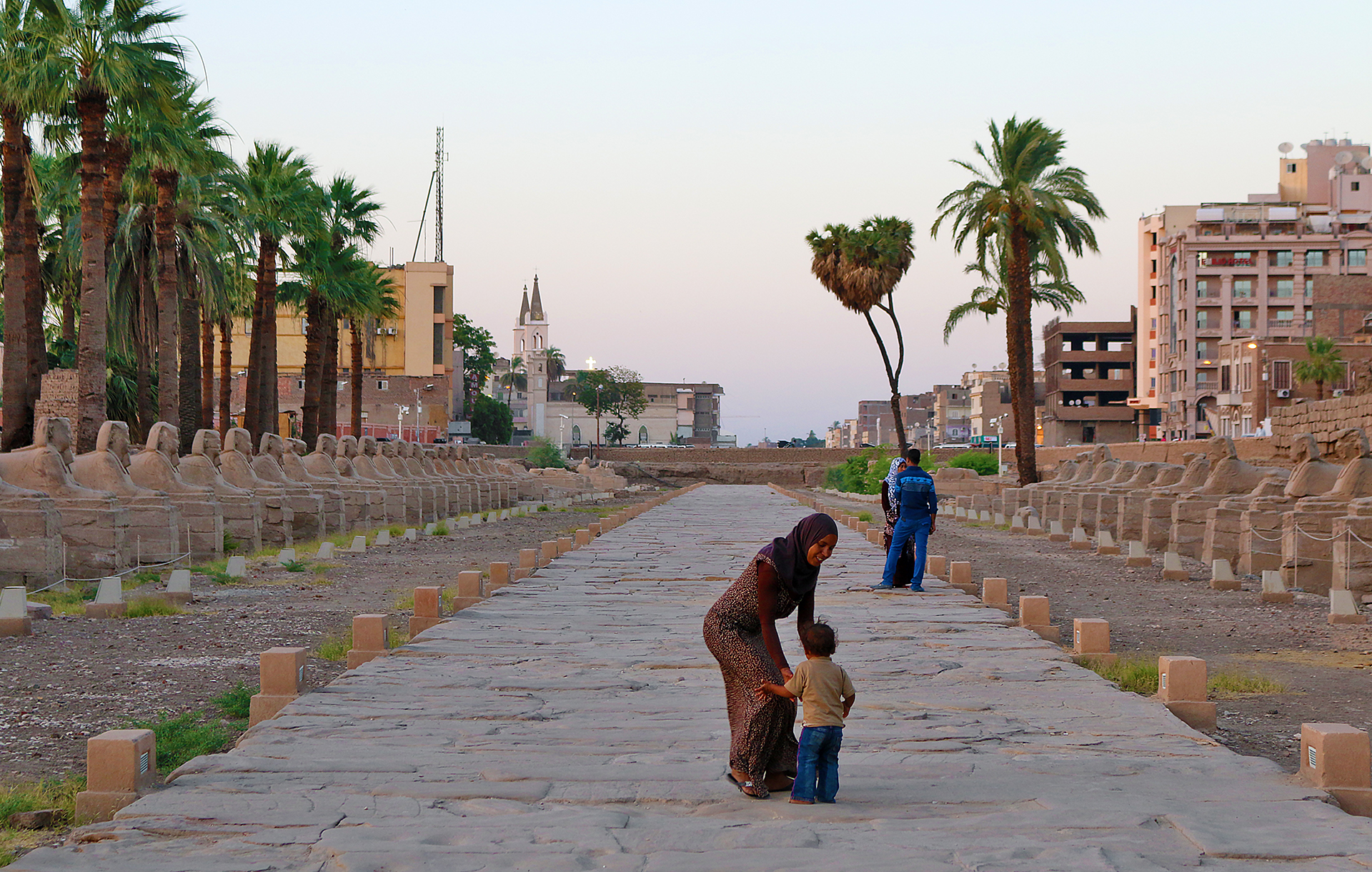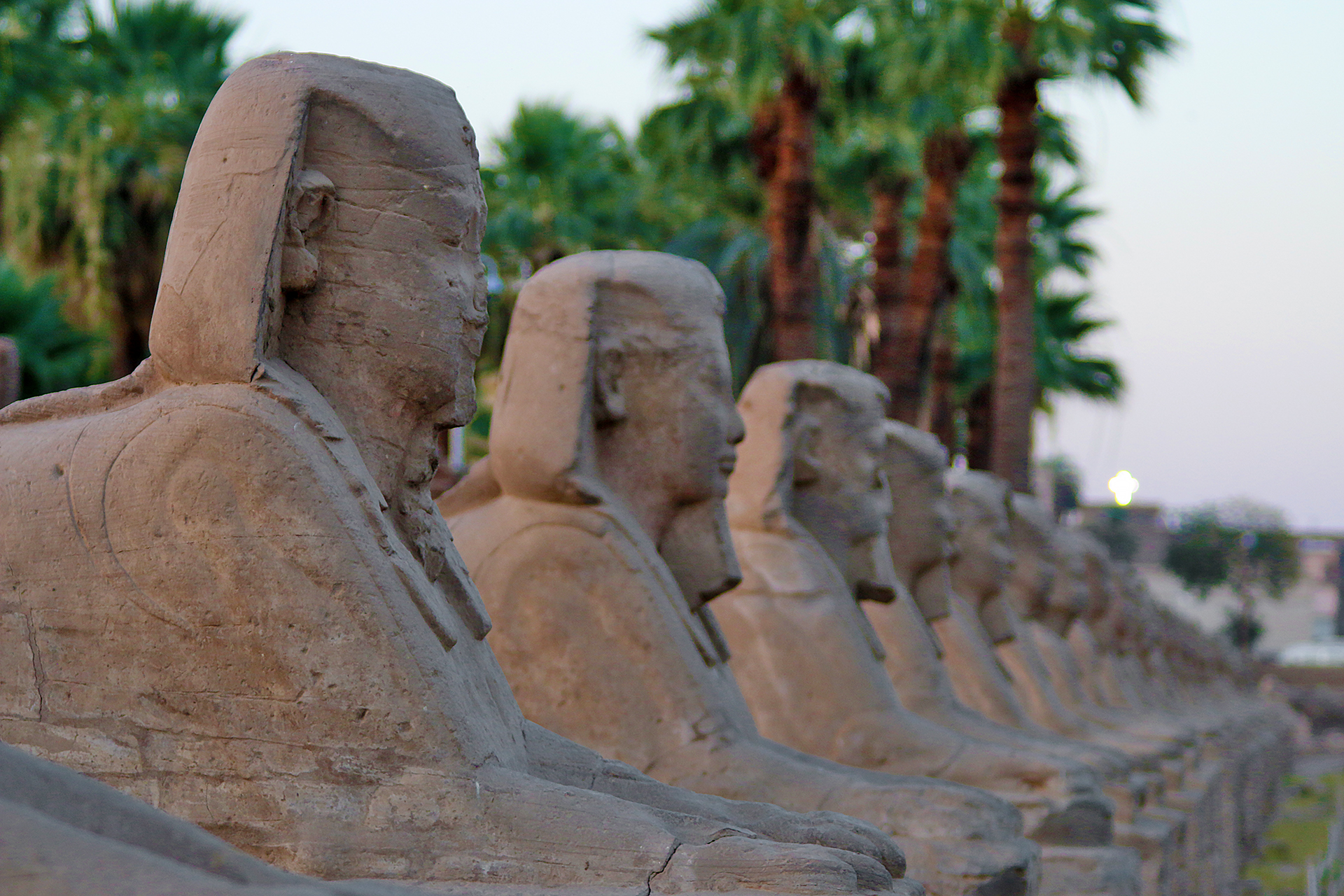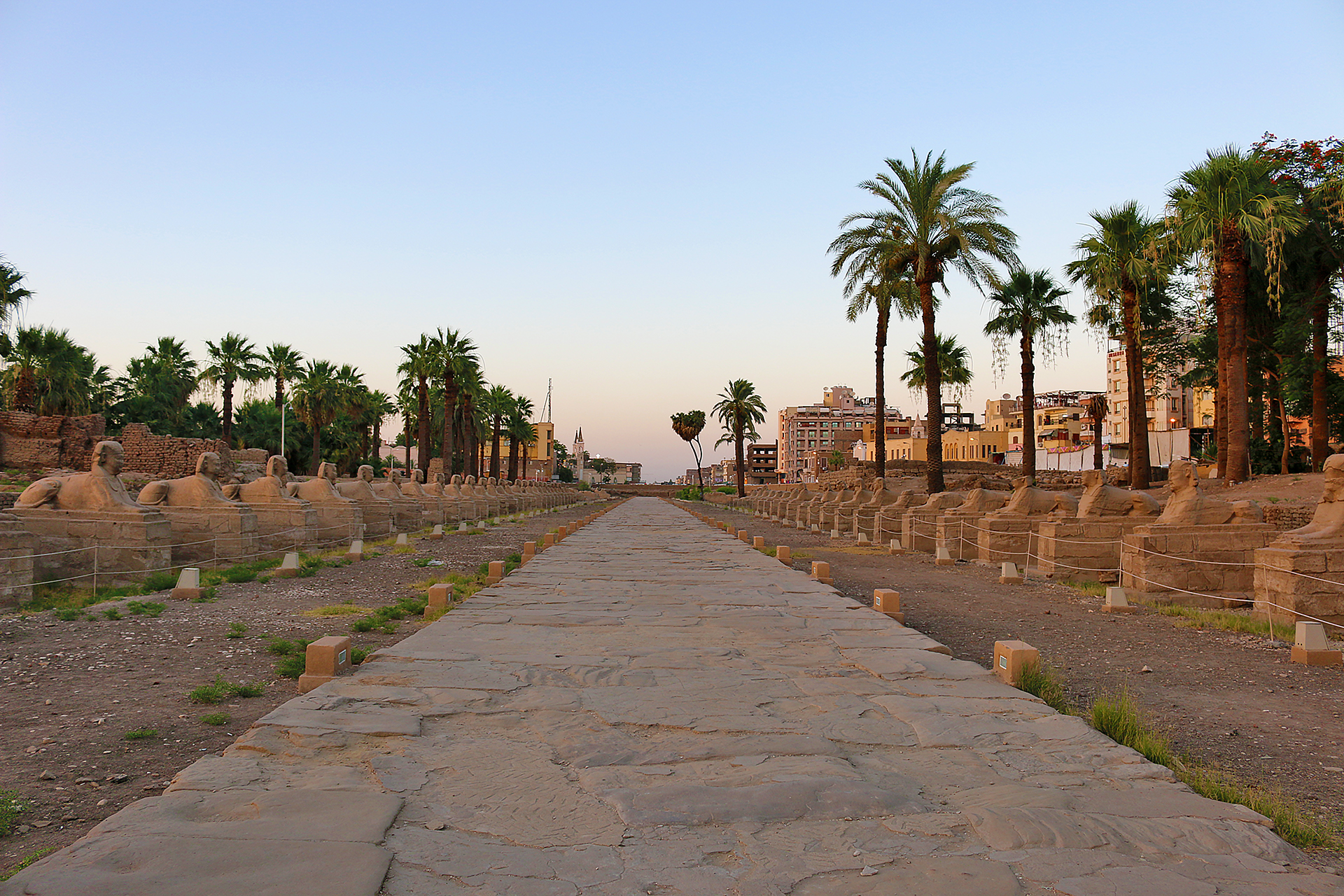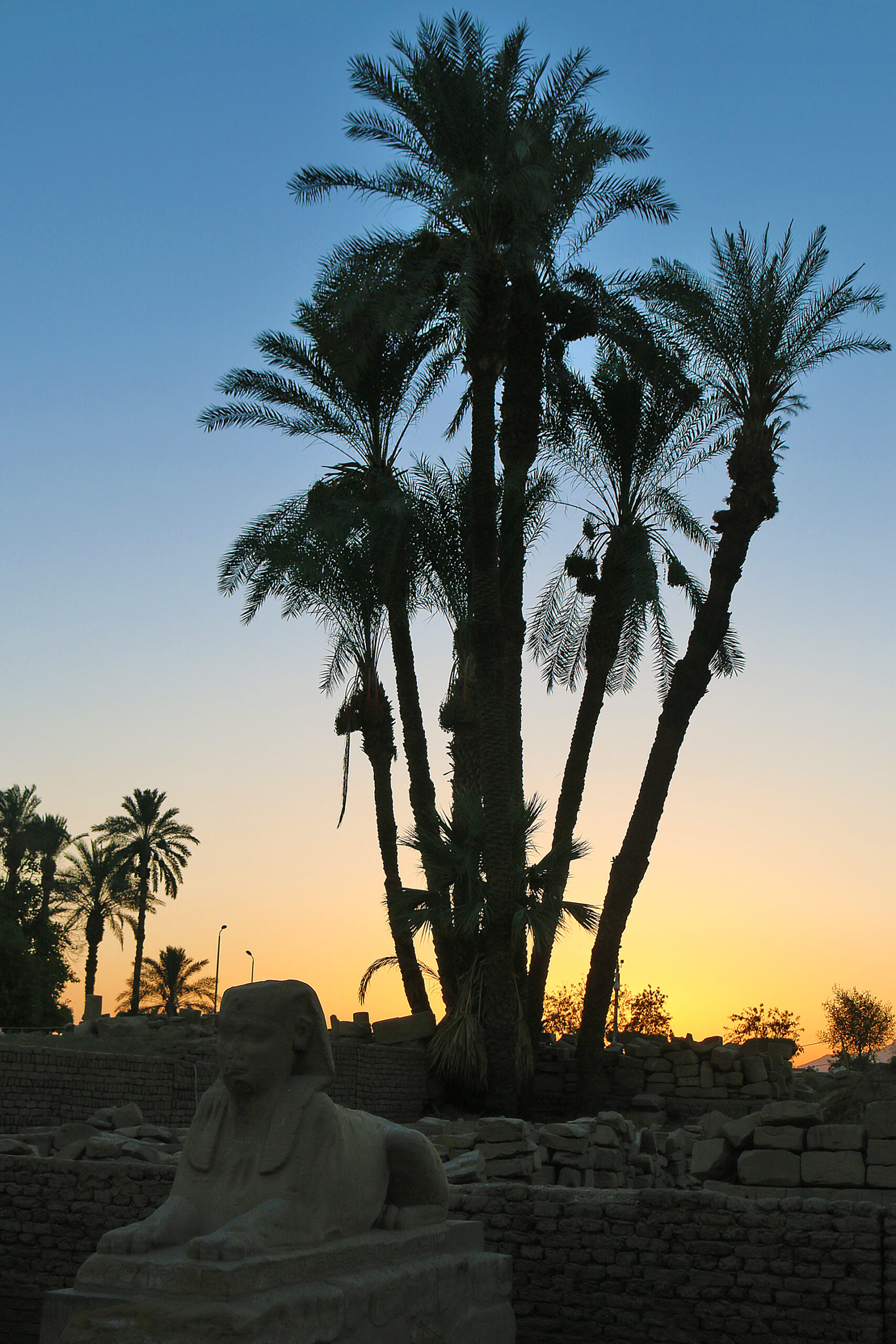Also known as The King’s Festivities Road or Rams Road, Avenue of Sphinxes at Luxor Temple in Egypt is a sight to behold — but at one time, the avenue was buried under layers of sand that accumulated over the centuries since it was first constructed sometime as early as the year 1570 BC or BCE during the era of the New Kingdom. The exact date of when construction began is not known; but it was almost 3,600 years ago.
Avenue of Sphinxes at Luxor Temple in Egypt

A mother and her son enjoy Avenue of Sphinxes during a warm yet pleasant early evening. The small “boxes” which line the stone avenue are lights which illuminate Avenue of Sphinxes during the darkness of the night.

A small portion of Avenue of Sphinxes is actually located within Luxor Temple, as the avenue extends 2.7 kilometers or 1.7 miles northeast to Karnak Temple and connects the two historic sites, which creates what is known as the “largest open museum in the world”.

Despite its lengthy history of being expanded across different Egyptian dynasties over the centuries with annexes added to it — including baths and wash basins, an area for creating pottery, and storage for wine vessels — Avenue of Sphinxes was only first discovered in the late 1940s.

When Avenue of Sphinxes was opened once again to the public on Thursday, November 25, 2021 after undergoing greater than seven decades of restoration work that had finally been completed, 1,057 statues in total — including 807 which are shaped like a sphinx and 250 others with a head that is shaped like a ram — lined the avenue.

Final Boarding Call
I enjoyed being among Avenue of Sphinxes — as well as both Luxor Temple and Karnak Temple. Seeing so many artifacts of ancient history right there before my eyes seemed overwhelming at times — but also completely worth the experience.
Of course, the most famous sphinx in the world is not a part of Avenue of Sphinxes, as that is located hundreds of miles away near Cairo.
The admission price is 180 Egyptian pounds, which is approximately $5.83 in United States dollars. Senior citizens can pay half price for admission. Once paid, you can stay at Luxor Temple for as long as you like until it closes at the end of the day.
Luxor Temple is open daily from 6:00 in the morning through 8:00 in the evening, with the last entry at 7:30 in the evening.
The drive from Cairo to the resort town of Hurghada while paralleling the western shore of the Red Sea took approximately five hours. I stopped for a few days in Hurghada before driving on to Luxor, which is purportedly one of the ten most dangerous roads in the world and took another three hours and 50 minutes.
If you are thinking of renting a vehicle and driving in Egypt, please follow this simple advice:
Don’t. Just don’t.
All photographs ©2015 by Brian Cohen.
